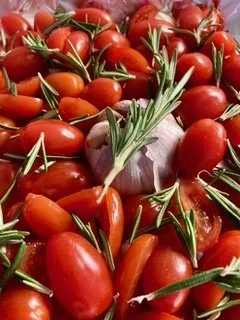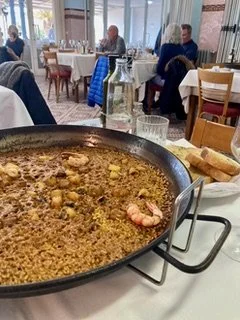Between the Wines
Photo © Rob Jones
As book groups go, it must be unique.
Reading Between the Wines brings together lovers of both fine literature and equally fine wines.
What’s not to love?
It was the brainchild of Lucy Howdle and her sister Clare who feel that there is a strong crossover between the way people talk about their favourite books, and the wines they love.
Clare Howdle explained how they came up with the idea.
“So, I've always loved stories and storytelling, and my sister has always loved wine and we were actually having a conversation about a story that I was particularly in love with, and listening to the way I was describing it, and she said, ‘That's really interesting. You're talking about character and flavour and the sort of world around the story. And I think about wine in the same ways.’ And we were drinking more and more, and increasingly seeing the synergies and thinking, ‘this could make a really interesting event where we pair wines with a story and everyone discusses the overlaps and where those opportunities for interpretation of flavour and character come from.”
On each occasion, Clare selects a short story, and then her sister Lucy finds a set of wines that express the same intentions, feelings or moods contained throughout the work.
On this occasion it was Leila Aboulela’s haunting tale, ‘To Enter the Garden’. Set in Northern Italy it tells the story of a power dynamic between a sultan-in-waiting, Selim, and his enslaved concubine, Fatou.
The reading is broken into three parts, with a different wines presented in between the readings. Lucy Howdle says choosing the right wines takes a lot of thought.
“I'll read the story and look for flavours or themes and they range from more literal to more abstract. My sister tends to choose stories that are quite difficult to pair with, which I think she might be doing to make it hard for me. So, the last group that we did was a story set in Ghana about Chinese investment in the country. So, to pair wines with that story was quite tricky.”
The wines chosen to partner the Leila Aboulela’s story were as follows:
An Italian Cortese, to represent the Italian garden setting of the story. Described as an ideal wine for summer drinking – reminiscent of a summer’s day, the sun-drenched, baked terraces of the villa. Lemons, stone fruits and orchard fruit flavours all connect to the fruit-laden trees in the garden.
Next came a south African Cinsault. Chosen for its innocent, clean crunchiness. But, also with a bite underneath the vibrancy, highlighting the vindictiveness, prejudice and power imbalance that runs beneath Selim and Fatou’s intimacy and affection.
The third and final wine was an Argentinian Bonarda Recoleta, which Lucy says is a wine about identity, signalling how Fatou and Selim’s lives part company. There are also some bold tannins and ‘bitterness’ to this wine, an astringency that brings an edge to the fruitiness.
Each attendee gets a sample of each of the wines, a flavour wheel for inspiration, and a form to fill in their impressions. There’s plenty of opportunity to discuss the wines and how they relate to the story.
Clare Howdle explains, “So, everyone has a chance to get their head around how we're tasting the wine and how we're understanding it. And I think that encourages them to think in a similar way about the story in a way that they might not have done before. So, I think that's exactly why it's a great. A great way of pairing the two.”
The reader for the evening was Afro-Greek artist Maria Christoforidou, who normally explores the connections between political, physical and performative operations of images and words. But what about wines?
“I think it has been quite mind-expanding and we were just discussing how writing is about giving words to experiences. So, when you're trying to think about the wine and how it tastes and what it smells like, it’s kind of bringing language to it. And we had this moment where someone said I was ‘smelling the wine and I didn't know what it smelled like,’ and someone said what? Whoa! Then you know immediately a light bulb went on. I think it really connects, to try to put language to our experiences. And this is what we're doing with the tasting of the food and trying to make connections and metaphors as well.”
The fourth running of the event took place at Espressini artesan coffee bar in Killigrew Street in Falmouth. Rupert Ellis is the proprietor there and says his customers are fairly demanding. They know what they like and often prefer to steer clear of some of the supermarket wines in favour of knowing a little more about the wines’ they are drinking.
Primarily a coffee shop, could he see a synergy between wines, literature, and coffee?
“Yeah, absolutely. You know, terroir is kind of the big terminology in wine. Terroir and altitude. And, you know, growing conditions are probably even more important in coffee than they are in wine. So, there's definitely a common denominator, and I think actually a lot of the language, a lot of the terminology that's used to describe the kind of science behind coffee and the science behind wine is exactly the same.”
The next outing for Reading Between the Wines will be during the Roseland Festival on the 26th of April at the St. Mawes Hotel, with a return visit to Espressini in Killigrew Street later in the year.
R




